The Tommykaira ZZ Is More than a Gran Turismo Hero
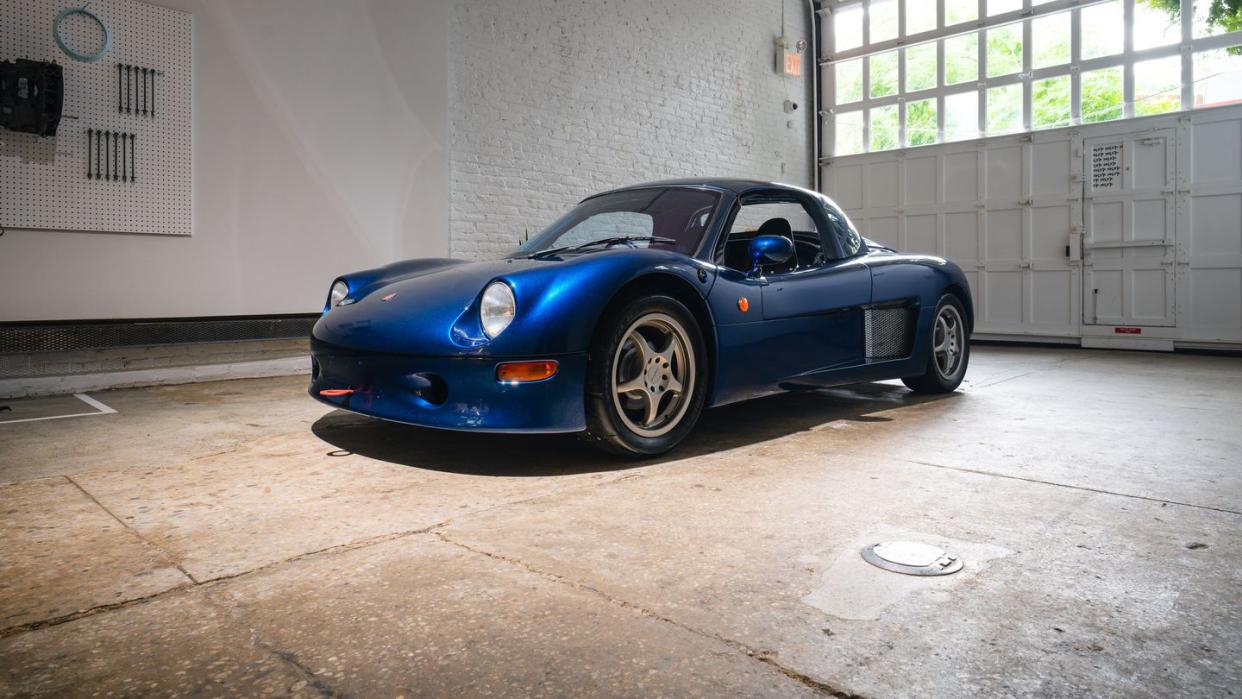

If you know about this car, it's probably from Gran Turismo. It's one of many obscure cars in the game, a tiny, frog-eyed sports car from a tuning brand not well known outside its native Japan. But this is not some oddball Kei car, it's one of the most compelling sports cars to come from the country.
Yoshikazu Tomita got his start importing European sports cars into Japan, for a small, but passionate fanbase. Kikuo Kaira was a Formula 2 racer, who later became an engineer. The two teamed up to create Tommykaira—the moniker derived from their surnames—in 1986, and their first tuned car was a version of the Mercedes 190E. Soon however, they turned their attention to Japanese cars, eventually winning a commission from Nissan to create a version of the R31-generation Skyline, the M30.
Japanese performance cars of the late-Eighties and especially the early-Nineties were all about high technology and high horsepower. More was more, and Tommykaira catered to this market, offering ever-hotter versions of the Nissan Sylvia and Skyline GT-R, and Subaru Impreza. But, Tomita and Kaira were far more interested in lightweight sports cars. Mr. Tomita owned a pair of Alpine A108s, which he believes were the only two in the country at the time; Kaira's hero was Lotus founder Colin Chapman. They wanted to bring a lightweight sports car to Japan. In a recent interview with Road & Track Kaira, speaking through an interpreter, said he almost felt duty-bound to preach the gospel of light weight.
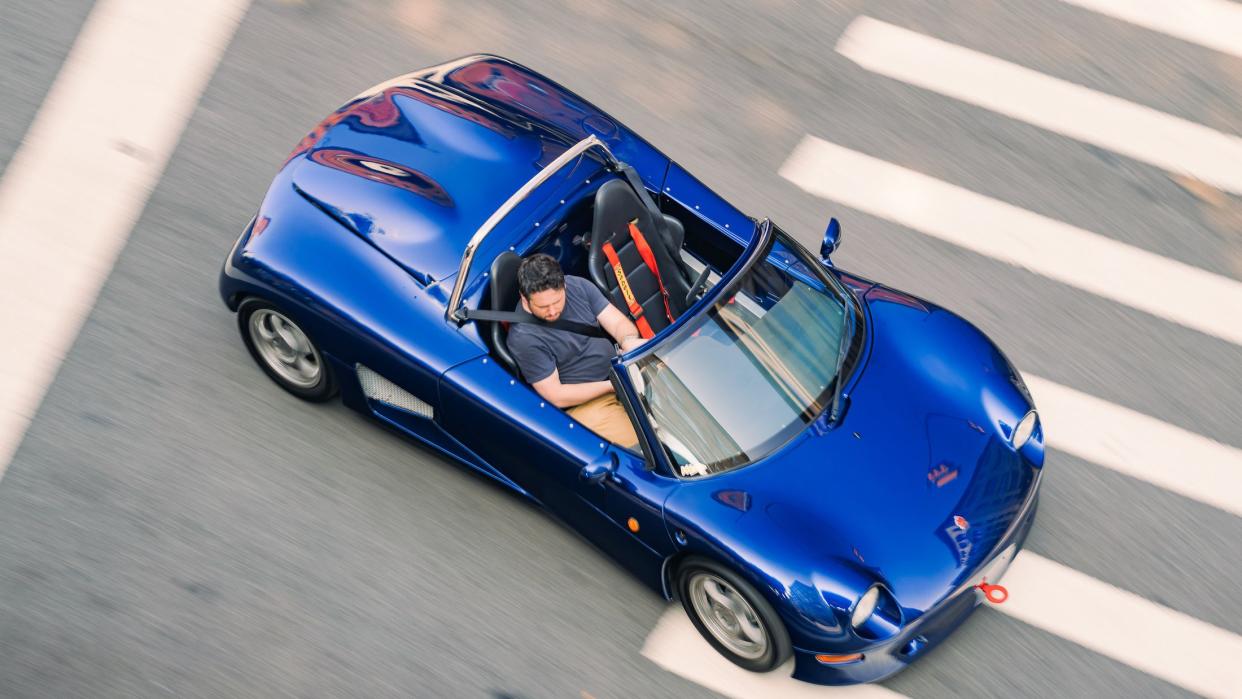
"I believed that lightness was the strongest weapon," Tomita says in a further email. "Back then, Japan was in a horsepower war, so the speed generated from the light weight sports car was very inspiring. Handling, braking, and acceleration all come together and give the driver pleasure." Kaira also tells Road & Track over email that the ZZ had the same power-to-weight ratio as Tommykaira's 550-hp Nissan GT-R. Tommykaira wanted to achieve performance in a different way.
The car that Tomita and Kaira created in the mid Nineties may strike many as being Lotus Elise-esque, but the Tommykaira ZZ actually debuted and made it into production first by a few months. In reality, it's a bit more old-school sports racer than the all-alloy Elise, with a basic aluminum monocoque chassis and tubular steel subframes at the front and back. Suspension is by unequal length double wishbones all around that look like they could've been taken straight off a Sixties race car. Behind classic Tommykaira-branded five-spoke wheels are brakes from Nissan, with the cute twin-piston front calipers seemingly plucked from the Skyline GT-R.
Tommykaira had a good relationship with Nissan and sourced a number of parts from the automaker, most notably the ZZ's 2.0-liter SR20DE four-cylinder. It's the same basic mill from Nissan's beloved S13 and S14-generation Sylvia sports cars and one the U.S. got in the Sentra, NX200, and Infiniti G20. Only here, it sports four Keihin carburetors that look like they came off some high-end motorcycle, and lumpy cams that give the ZZ an extremely uneven idle. Kaira told us that going with carbs saved the cost and complexity of using fuel injection, while ensuring reliability. Tomita also said this would allow owners more tuning flexibility.
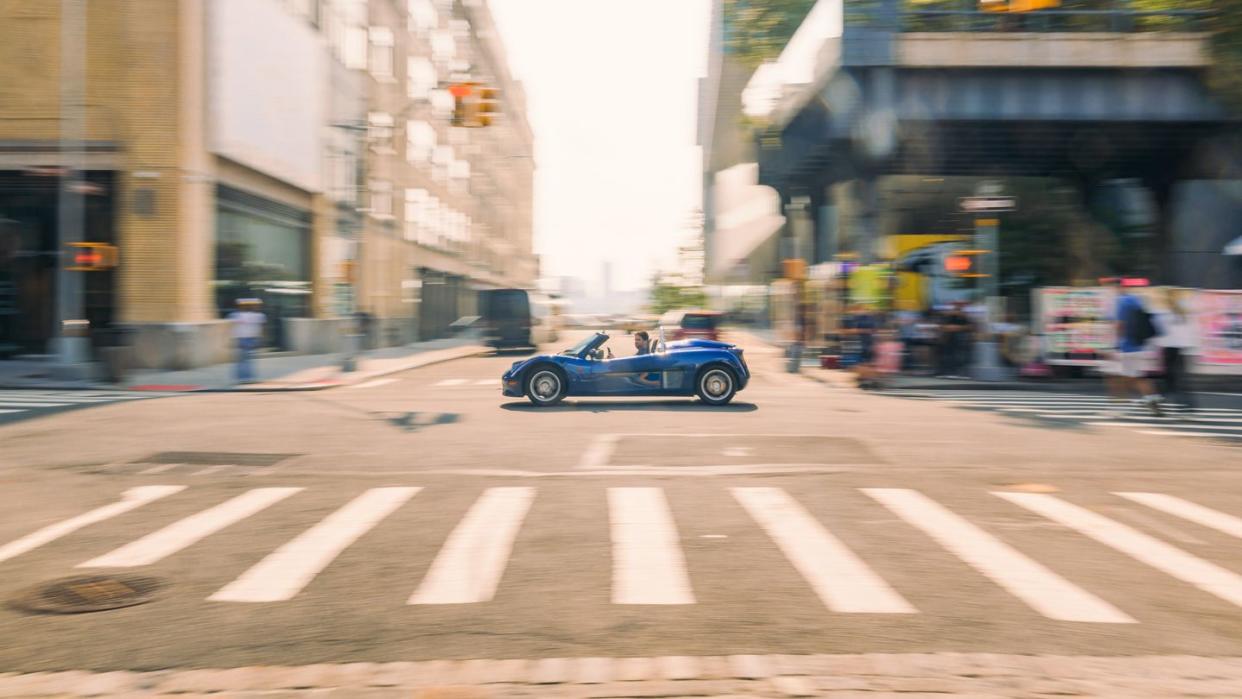
Despite Japanese origins, Tommykaira set up a U.K. company, Tommykaira U.K., to build the ZZ. Tomita tells us he wanted to lean on the country's experience with building lightweight sports cars out of fiberglass and aluminum, and access the network of suppliers built up around Lotus in Norfolk. Other parts came from various Nissan operations throughout Europe. Even the engine came from the automaker's Sunderland factory in the north of England.
Morton Street Partners, a Manhattan-based gallery and collector-car advisory firm, recently imported this ZZ from Europe, in no small part because the staff grew up playing Gran Turismo and wondered what the car would be like in real life. It's a striking thing to see in person, somehow both bigger and smaller than expected. Though it tried, Gran Turismo couldn't quite capture the ZZ's grace. It looks like a sports-racer from an era before aerodynamics dominated all, albeit viewed through a Nineties lens. The blue metallic paint is rich and the car appears almost impossibly wide, even though it is in reality, tiny.
It looks remarkably high-quality, too, and that extends to the interior. Bare, but beautiful with a bespoke brushed-aluminum gauge cluster and one of the coolest shifters I've ever seen. It's a rod straight back to the gearbox and it feels even better than it looks. Getting into the car with the roof on is a challenge however, with wide, tall sills and a comically tiny door opening. It's a lot easier with the roof off, though actually taking the roof off is a process.
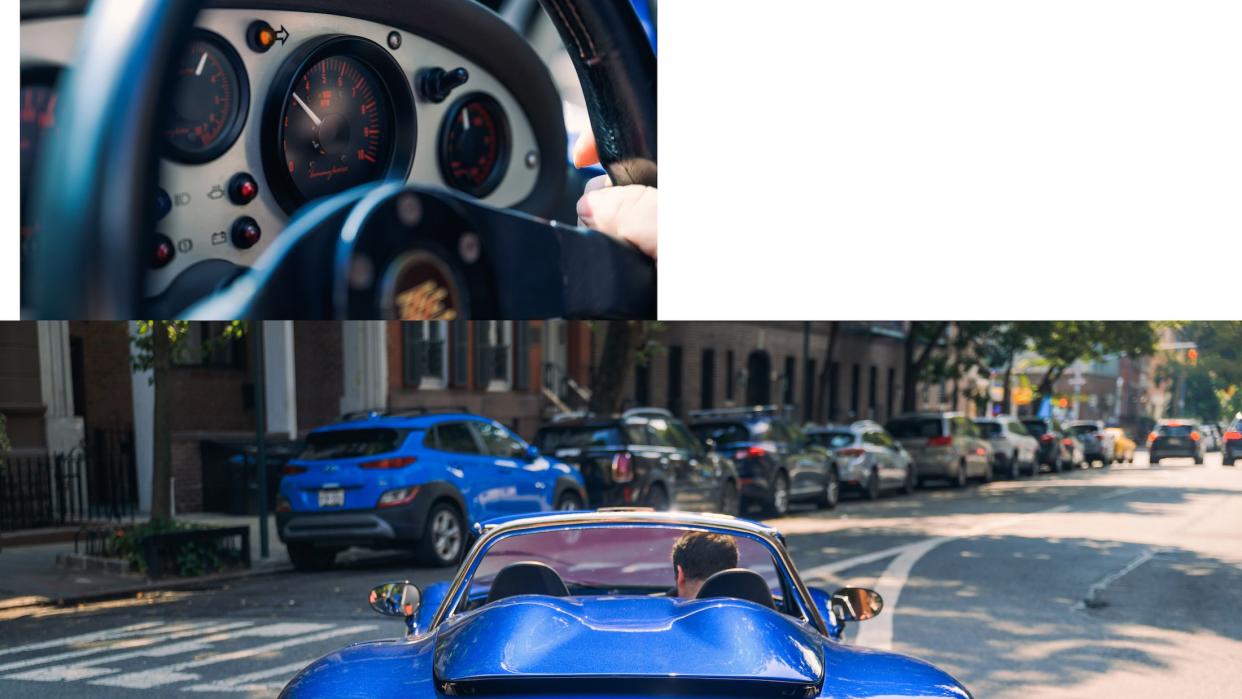
The ZZ actually has two roofs. One is a more traditional fiberglass hardtop with two clips up front and two out back that have to be undone in order to lift off the roof. The roof is light enough to be carried by one person, but it's big and awkward. Having a friend help is great. The second roof actually sits above the engine cover and can be removed to fit on top of the roll bar and windshield. Kaira tells us he wanted the car to be something of a four-wheeled motorcycle, "with the understanding that it would get wet if it rained," he says, but this top provides some weather protection. You have to remove a number of Torx bolts to get it out of its normal resting place, though, and the time-consuming process means you and the ZZ's interior will get wet.
To get to the engine, you have to take off the canopy top and a separate cover held on by yet more Torx bolts. Once revealed, the SR20 appears quite large, though this is surely a function of the car's size. It exhales through a single pipe mounted ever so slightly off center. Fire it up, and it's clear this is no ordinary Nissan engine. It's cammy, and it takes at least 10 minutes to even stay running, but once it's warmed up, it maintains a deliciously lopey idle. It sounds and feels purposeful.
I only had about an hour or so to drive the ZZ around Manhattan for photography. It shines despite the fact that this hardly the natural environment for a lightweight sports car. Once you get over the initial intimidation of right-hand drive and being so low that Toyota Camrys seem impossibly tall, the Tommykaira is easy to drive. Every control is light and precise, especially the shifter, which might be the best I've ever felt in a mid-engine car. Even the non-power steering doesn't ask for much muscle, while giving incredible feel.
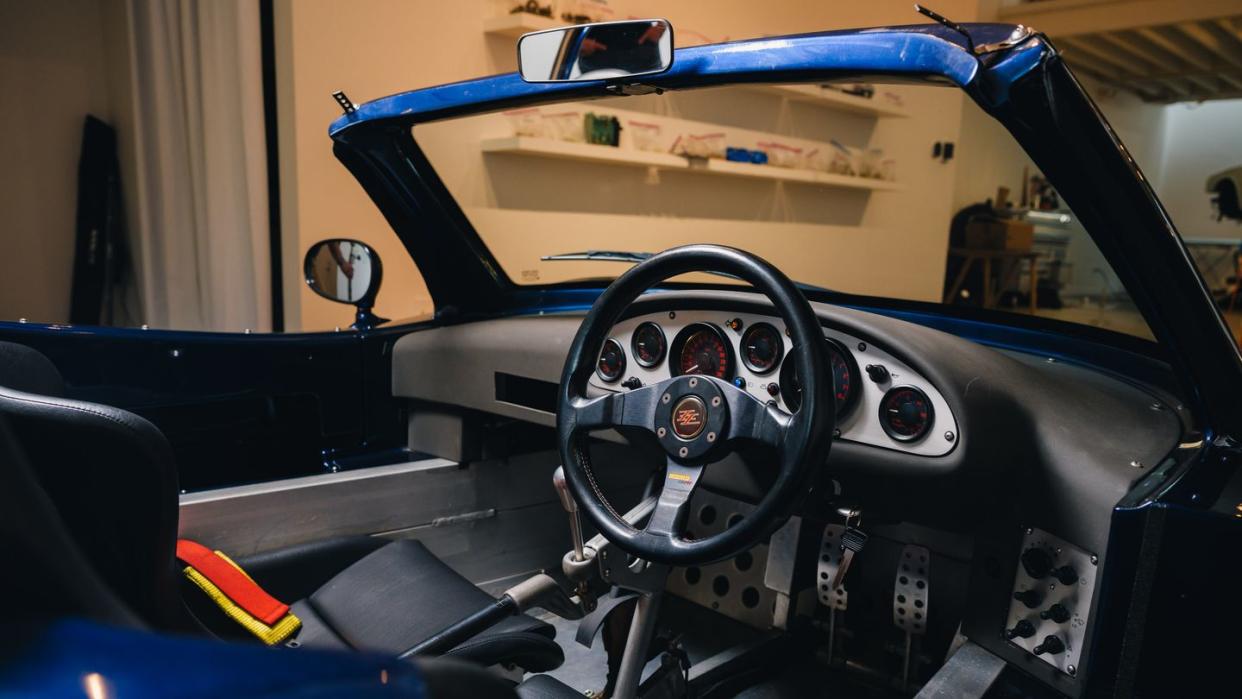
The front of the Tommykaira might be one of its best attributes. Turn the wheel and the ZZ darts into the corner immediately—this a rare instance of go-kart-esque handling actually applying here. The engine is surprisingly friendly too, with lots of low- and mid-range torque and an exhaust note that's the right amount of rude. Strangely, you don't really hear much of the characteristic "honk" of an engine with individual throttle bodies, but this is hardly a problem.
There are some idiosyncrasies. The turn signals are activated by a toggle switch on the dashboard and thus don't self cancel, and the pedalbox is quite narrow. Also, the aluminum door sills get quite hot in the sun, but then again, we were shooting on a 90-plus-degree summer day, so that's to be expected. It didn't take me long to get confidence in the car, squirting between stoplights, shifting for fun and turning the wheel aggressively to feel the car dart from side to side.
What was so cool is the effect it has on people. Even driving through ritzy parts of lower Manhattan, you attract lots of attention, whether it's befuddlement about this strange little car or appreciation for something that's so different from everything else. Few know exactly what it is, but two passers by had good guesses. A man on a bike wearing a BMW hat pulled up alongside me and asked if it was a Kei car. I told him that was a very good guess. He initially thought it was a Renault Sport Spider, which was an even better guess. Another thought it was a Lotus 23, and spiritually, it's really not all that different from the mid-engine, mid-century racer. The ZZ radiates joy. Even a car-hating town like New York gets that it's something special.

A change in Japanese safety regulations in 1999 forced the ZZ off the market, though, and with no ability to sell cars, Tommykaira U.K. went under. A new company, Breckland Technology, was set up to build cars to fulfill existing orders. Mike Rawlings, the former director of Breckland, tells Road & Track in an email that it built updated ZZs for Tommykaira for a few years. Eventually, Tommykaira was sold to Autobacs, a large parts retailer in Japan, and Breckland began building the ZZ for a new English brand, the Leading Edge Sports Car Company, which sold the ZZ as the 190RT and 240RT until 2005.
Tommykaira developed the ZZII and debuted it in 2002 as a larger, faster successor to the original ZZ, complete with a twin-turbo inline-six sourced from the Nissan Skyline GT-R. But under Autobacs control, this project was sidelined for another ZZ successor, the ASL Garaiya. Neither made it past the prototyping stage. Tomita now wants to put the ZZII in production, this time with the V-6 from the current Nissan GT-R, and while the COVID-19 pandemic set back his plans, he's working with investors to finally turn the car into reality.
Doing research before I drove the ZZ, I turned up a 1996 clip from the original run of Top Gear where Kaira is interviewed. "Japanese sports cars are okay," he says, "but they have too much technology and lack character. I wanted to build a simple and exciting sports car, like from the old days. I want to sell 100 cars. If I don't, I will lose all confidence in Japanese taste."
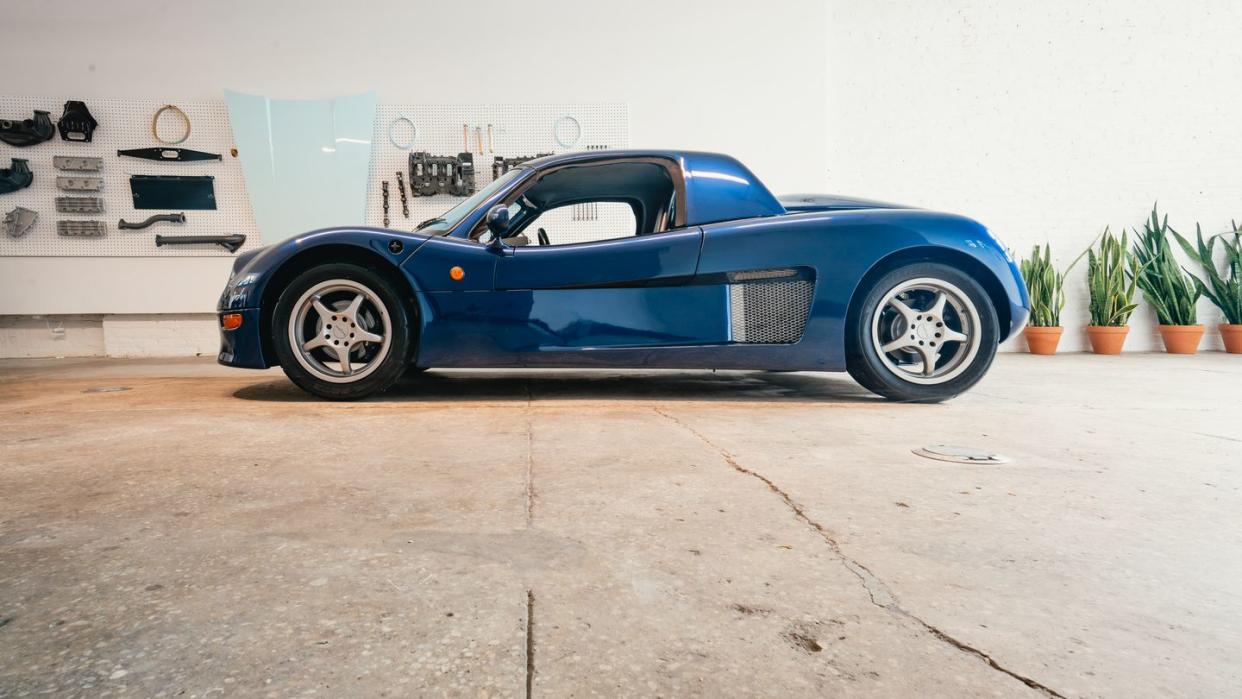
He need not have worried: Tommykaira managed to sell over 200 examples of the ZZ. He also tells Road & Track that the emergence of the Elise was further proof that he and Tomita had the right idea.
Initially, the ZZ sold for around 5 million yen, which is around $33,000, or around $63,000 now. (The yen to USD conversion rate is similar today to what it was throughout 1997, so while these numbers are far from exact, they at least give you a range.) Morton Street Partners will sell you this car for $75,000, and while that's a bit more money than importing an Elise of similar vintage—or buying a later U.S.-market car—the ZZ is far rarer, and perhaps, more special. And in a world where prices for Nineties Japanese cars are exploding, this seems like great value.
The ZZ is cool on screen, but it's so much better in real life. It's not simply cool for its inclusion in an iconic game, but because it nails all the fundamentals of what makes a great sports car. It's proof that there's no substitution for light weight.

A car-lover’s community for ultimate access & unrivaled experiences.JOIN NOW Hearst Owned
You Might Also Like
